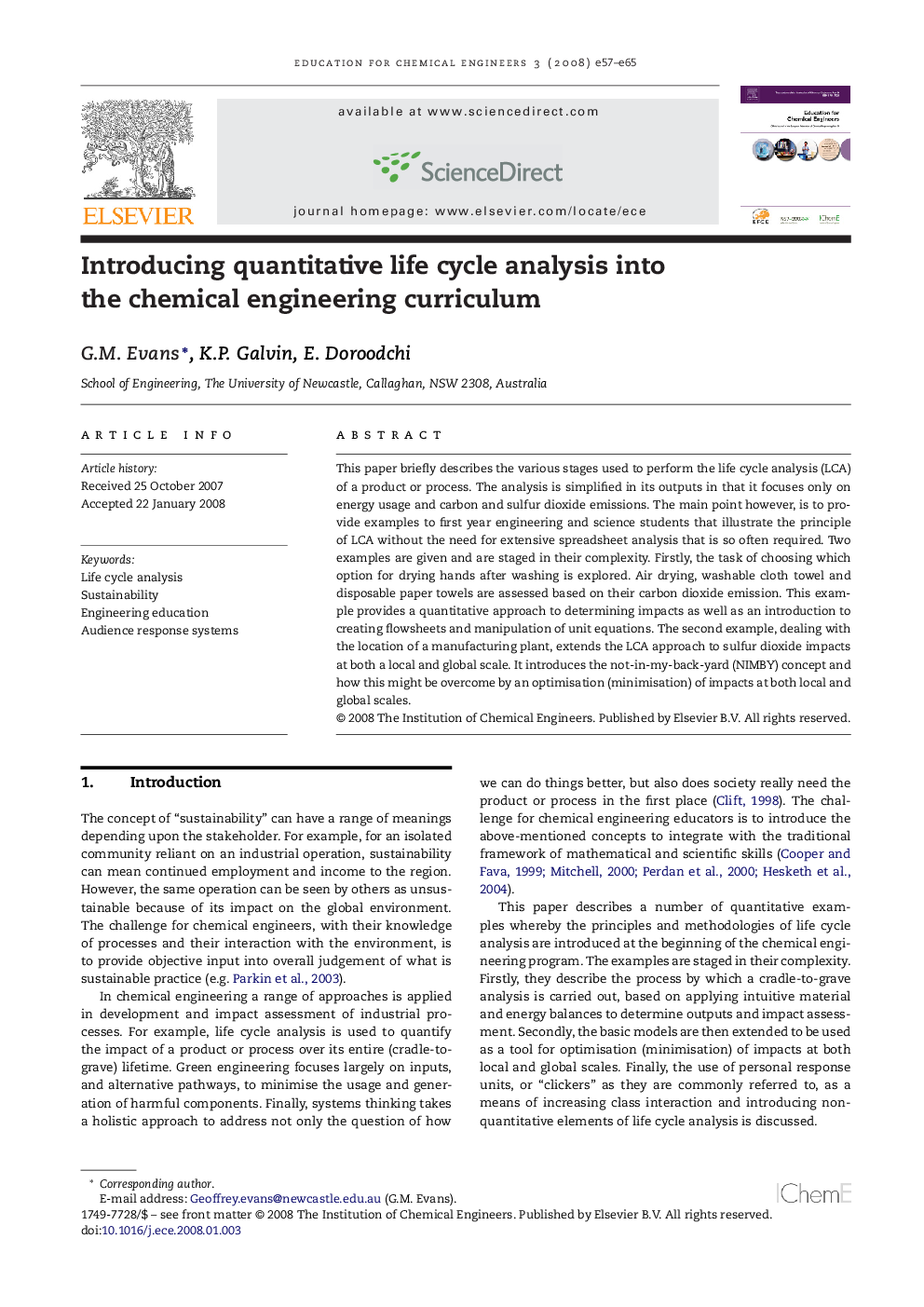| Article ID | Journal | Published Year | Pages | File Type |
|---|---|---|---|---|
| 178584 | Education for Chemical Engineers | 2008 | 9 Pages |
This paper briefly describes the various stages used to perform the life cycle analysis (LCA) of a product or process. The analysis is simplified in its outputs in that it focuses only on energy usage and carbon and sulfur dioxide emissions. The main point however, is to provide examples to first year engineering and science students that illustrate the principle of LCA without the need for extensive spreadsheet analysis that is so often required. Two examples are given and are staged in their complexity. Firstly, the task of choosing which option for drying hands after washing is explored. Air drying, washable cloth towel and disposable paper towels are assessed based on their carbon dioxide emission. This example provides a quantitative approach to determining impacts as well as an introduction to creating flowsheets and manipulation of unit equations. The second example, dealing with the location of a manufacturing plant, extends the LCA approach to sulfur dioxide impacts at both a local and global scale. It introduces the not-in-my-back-yard (NIMBY) concept and how this might be overcome by an optimisation (minimisation) of impacts at both local and global scales.
